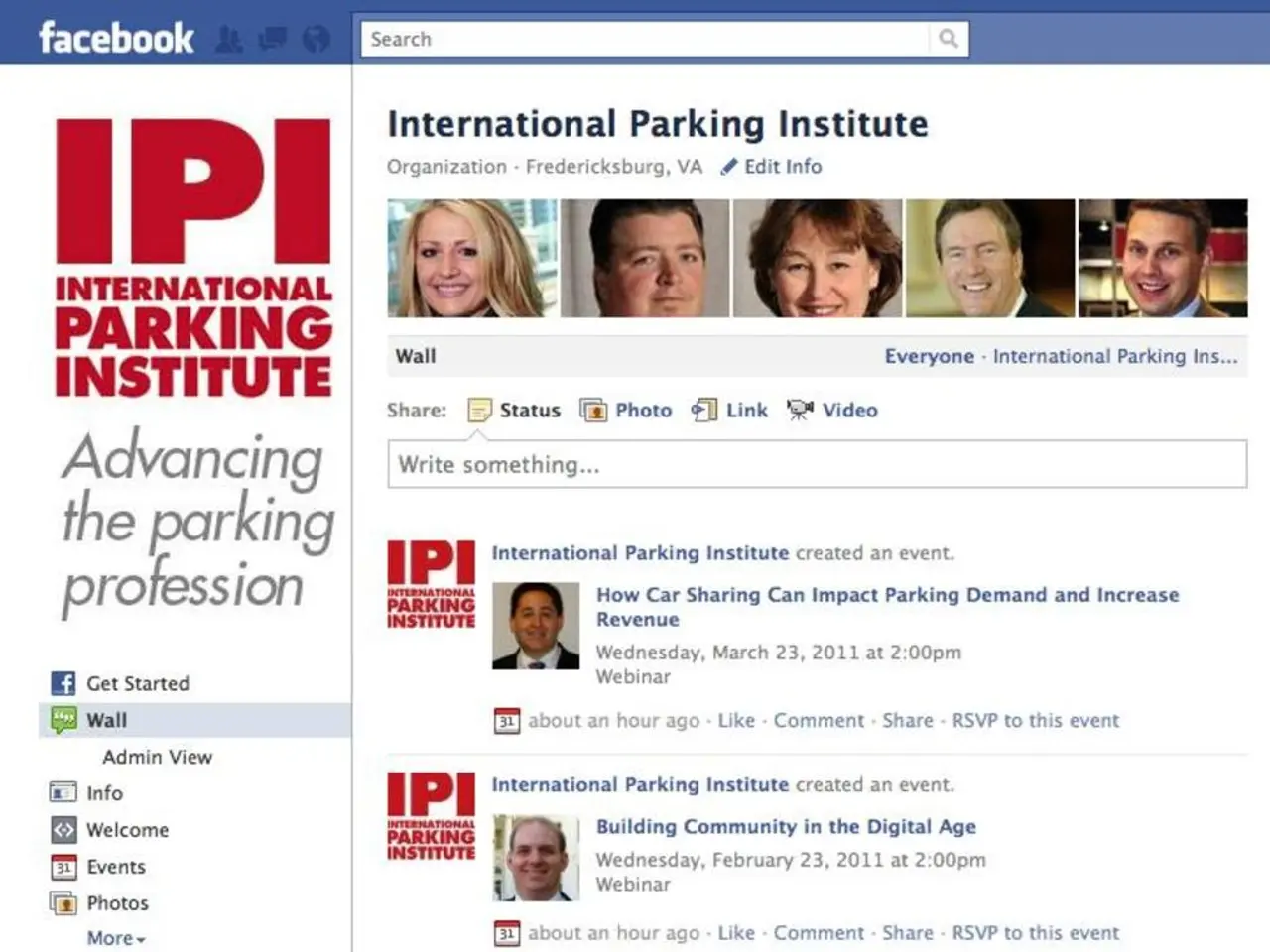Influence of Digital Platforms on Day-to-Day living
In the digital age, social media has become an integral part of everyday life for many people. However, it is crucial for individuals to develop strategies for managing its impact on their lifestyle, particularly in regards to self-esteem and body image.
Social media platforms provide a constant source of entertainment, information, and social interaction, which can lead to increased screen time and decreased productivity and real-life social activities. However, they also offer opportunities for connecting with friends and family, accessing information and resources, and building communities around shared interests.
Unfortunately, social media can have a detrimental effect on self-esteem and body image. This is primarily due to exposure to idealized, edited images and a culture of social comparison, which often results in body dissatisfaction, anxiety, and lowered self-worth. Platforms that encourage appearance-focused content and provide immediate feedback (likes, comments) amplify concerns about physical appearance and foster dependence on external validation.
Key mechanisms contributing to these negative effects include social comparison, the imaginary audience effect, cyberbullying and harassment, sleep disruption, and the internalization of unrealistic standards. Comparing oneself to idealized images leads to negative self-assessment and reduced self-esteem, while feeling constantly observed and judged by peers increases vulnerability to criticism and anxiety. Negative interactions on social media can damage mental health and self-esteem, and late-night social media use can harm sleep quality, worsening emotional regulation and mood. Filtered and edited photos reshape teens’ self-image, leading to dissatisfaction with real appearance, sometimes leading to heightened interest in cosmetic procedures.
To mitigate these negative effects, individuals can curate their social media feeds to follow body-positive, realistic, and diverse accounts that promote authenticity and positivity. Setting boundaries for social media use, including limited screen time and designated social media-free periods, can reduce overexposure and enable mental reset. Practicing mindful engagement by being aware of emotional responses while using social media and disengaging from harmful content or interactions can also help.
Normalizing open discussions about body image and self-esteem with peers or family can build resilience and critical thinking against unrealistic ideals. Taking regular social media detoxes can break cycles of comparison and external validation dependency. Promoting digital literacy to discern credible mental health and body image information online can reduce the impact of misinformation.
Platforms also have a role to play in promoting authentic content that promotes diversity and inclusivity while creating a safer online environment for their users. It is important for individuals to cultivate a strong sense of self-worth and identity outside of social media by engaging in activities that promote self-care and self-expression.
[1] Boyd, D. M., & Ellison, N. B. (2007). Social network sites as networked publics: Affordances, dynamics, and implications. Journal of Computer-Mediated Communication, 13(1), 210-230.
[2] Wood, A. M., & Hankivsky, O. (2017). The impact of social media on body image: A systematic review. Body Image, 21, 16-27.
[3] Karam, J. P., & Khalifeh, A. (2019). Snapchat dysmorphia: A new body dysmorphic disorder in the digital age. Dermatology Online Journal, 25(10).
[4] Beran, M. (2014). The role of social media in body image concerns and disordered eating among adolescents. Journal of Adolescent Health, 55(6), 677-684.
[5] Ybarra, O., & Mitchell, K. J. (2014). The impact of social media on adolescents' mental health: A review of the empirical evidence. Pediatrics, 134(5), e1205-e1212.
- While social media offers opportunities for entertainment, information, and social interaction, it can also negatively impact mental health and self-esteem, particularly in regards to self-esteem and body image, due to exposure to idealized images, social comparison, and the internalization of unrealistic standards.
- To combat these negative effects, individuals can curate their social media feeds to follow body-positive, realistic, and diverse accounts that promote authenticity and positivity, and practice mindful engagement by being aware of emotional responses while using social media and disengaging from harmful content or interactions.
- In addition, platforms can promote authentic content that promotes diversity and inclusivity, create a safer online environment for their users, and normalize open discussions about body image and self-esteem with peers or family, which can build resilience and critical thinking against unrealistic ideals.




